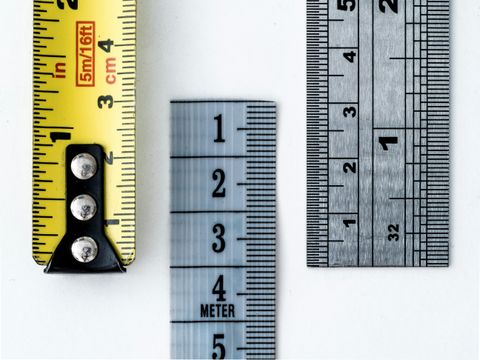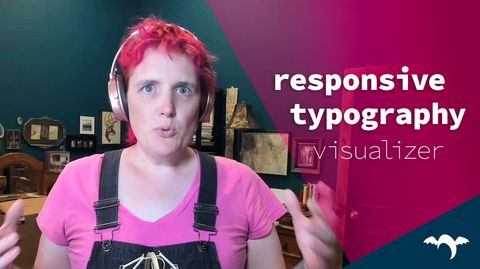This post is part of a series on revisiting fluid typography:
One thing I want to highlight
from the last several posts in this series
is that my solutions often involve
combining and comparing units.
In the post on user font-size preferences,
I pointed out that em-based root font-sizes
multiply the user setting.
If we ask for a 20px font-size
by calling it 1.25em,
and then the user also asks for a 20px font-size,
the result will not be agreement
but a combined 25px font.
If we switch to a px-only approach,
we’re ignoring the user preference entirely –
which is even worse.
But if we stop doing the math in our heads,
and provide the browser with both units,
we can do a much more interesting
and useful comparison:
html {
font-size: max(1em, 20px);
font-size: clamp(1em, 20px, 1.25em);
font-size: calc((1em + 24px) / 2);
}
In all three cases,
there’s no conversion required.
We state clearly the px font-size we’re aiming for,
and then compare it against the user-provided em.
The units have different meanings,
and those meanings are useful
for expressing more clearly
the negotiation between site and user font sizes.
I like to think of relative CSS units
as browser-provided variables,
allowing us to pass in a multiplier.
We could write it out long-hand, if we had to:
html {
font-size: clamp(var(--user-font-size), 20px, 1.25 * var(--user-font-size));
}
Thinking about units that way
reminds me to think about the meaning
rather than the assumed px value of the unit.
Use the unit that means what you mean
Once I’ve handled that user-preference negotiation
on the root element,
I can refer to the result of that elsewhere
as 1rem.
In my mind 1rem is a always a calculation
with a variable in it:
calc(1 * var(--negotiated-base-font-size)).
Similarly 1em can be thought of as
calc(1 * var(--current-font-size)).
The difference between 1rem and 1em
is like the difference between --brand-pink
and currentColor.
Both are variables, both are useful,
but they describe entirely different relationships.
To ask which one is better in general
is an absurd question.
If I want to develop
fluid type calculations
that adapt to local context,
I’ll use em and cqi (container inline size) values.
If I want my calculations to remain consistent
across the entire page,
I’ll use rem and vi (viewport inline size) calculations.
In either case,
I’ll define those values on body
or other elements –
so that 1rem always refers to the
result of our initial negotiation,
and doesn’t take on more complex meaning.
How I handle spacing in CSS
It’s taken me a while to get here,
but this entire series was set in motion
by a great Ashlee Boyer article about
using px for spacing.
Her point is that users zooming in
care mostly about zooming the content –
and it can make things less readable
if we always zoom the spacing
at the same rate as the text (using em or rem).
We end up with excessive white-space
that pushes our content off-screen.
I think she’s pointing to a worthwhile concern,
but I came to a slightly different conclusion.
We don’t have to choose between px and em/rem
as our only sizing options here!
We can again
describe for the browser
how we think about white space
in more detail –
accounting for both font-size
and available space.
I actually use several different
‘spacing’ units in my work.
My favorite is the lh (line height) value.
When I’m putting space between paragraphs
or list-items in a flow of text,
I want to maintain a consistent rhythm –
so 1lh is the default,
and I can use multiples like
0.5lh or 3lh when I need some variation.
If I need this to be consistent across the page,
I can use rlh values instead.
But if I want to space things
on the inline axis, add gaps in a grid,
or put padding around a card,
I might also want to account
for the available space.
So now I’m negotiating two different concerns,
and I can represent each with a different unit –
using comparison and math functions
to get a final value.
Maybe one of these:
.card {
--min: min(1lh, 2vi);
--nearest-half: round(up, 2vi, 0.5lh);
}
If we know we want exactly 12px for spacing,
then absolutely –
just say 12px!
There’s no reason for unnecessary conversions.
But if we want to be responsive
to font-size and available space,
we can do that instead.
We could even clamp our responsive values
within a range of font sizes.
The right units
for any situation
are the ones that express most clearly
what we mean –
and sometimes what we mean
requires a combination of units.
This is the central premise of
the OddBird approach to
what we call
Poetic CSS Architecture.
There’s no best unit,
no best layout mode,
and no best selector.
When we use the entire language,
we have more tools for clearly expressing our goals.
If you enjoy Miriam’s writing
on modern CSS,
we offer
consulting and training
around Poetic CSS Architecture –
to help you eliminate technical debt
and build more performant
sites & applications.



